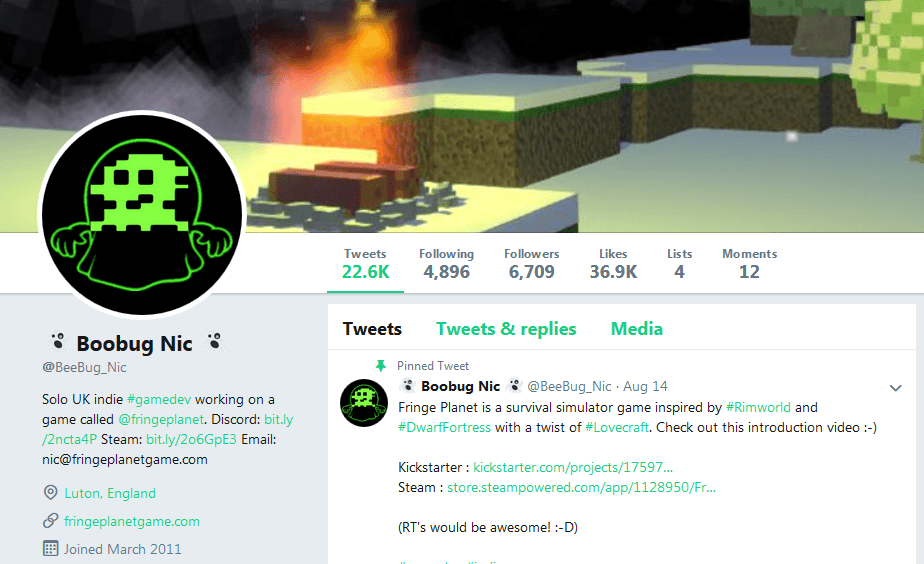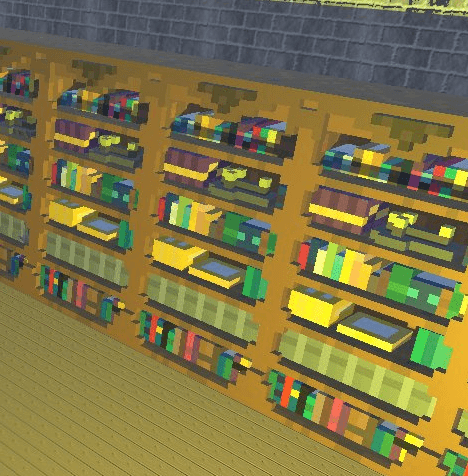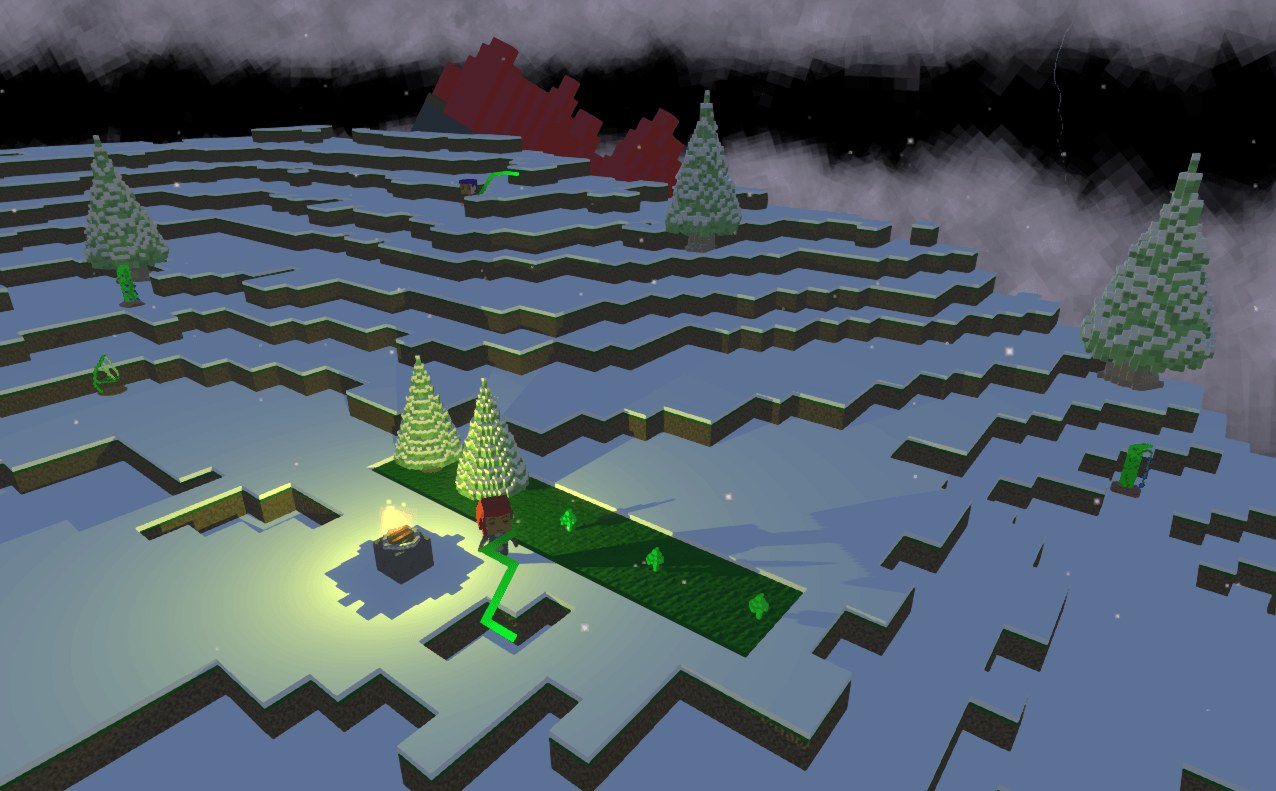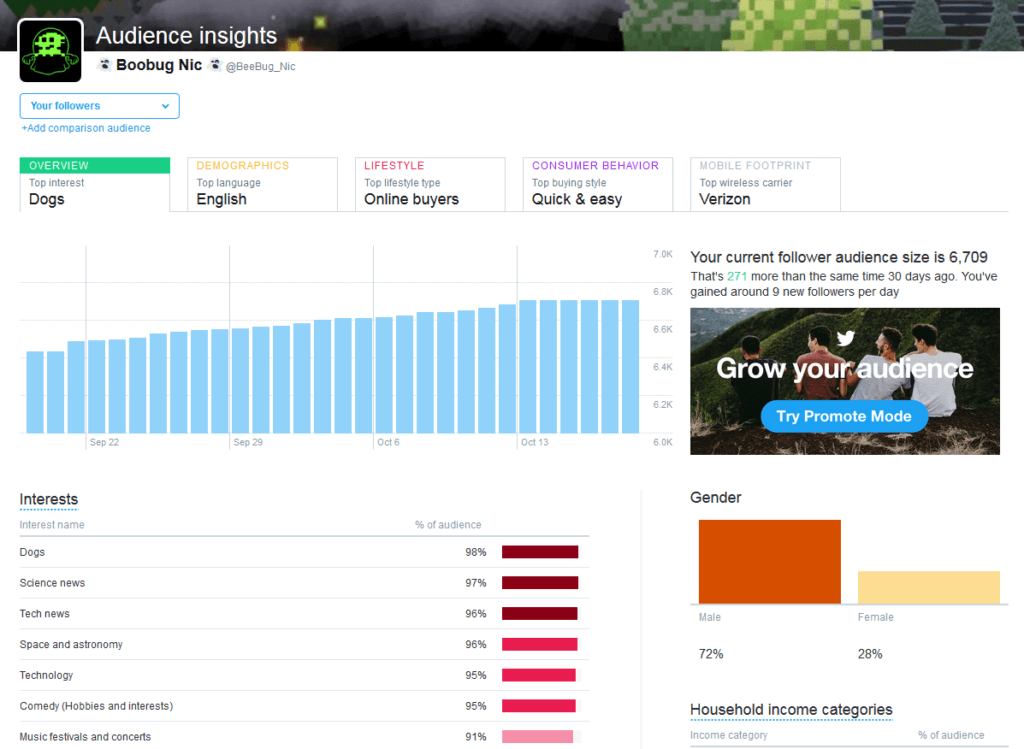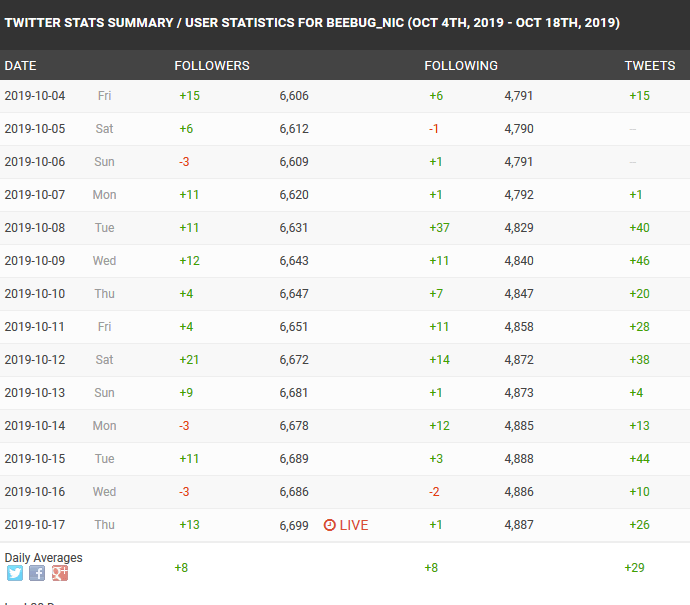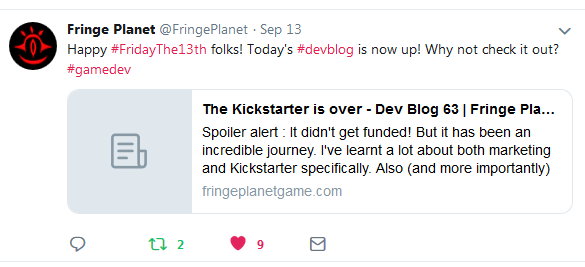Game Development and Twitter – Dev Blog 68
So, the chances are if you are reading this, you’ve come from Twitter. You’ve probably seen one of my tweets about this blog, it has piqued your curiosity and you’ve come and visited. Since I started work on Fringe Planet I’ve used Twitter extensively for marketing. It’s an incredibly useful social media site for me. It allows me to reach a vast array of potential customers, like minded game developers and streamers. It allows me to get feedback rapidly on ideas and prototypes.
It’s also a lot of work. Not just producing tweets, but actually creating the engagement that makes the tweets valuable. It’s also been getting a lot harder to get that engagement in the past few months. Which will probably be the topic of another blog post soon.
I get asked a lot about how I’ve grown my Twitter, so I thought I’d share a few hints and tips with you all. There are far too many very awesome game developers out there who aren’t maximizing the efforts they are spending on Twitter – so hopefully this will be useful to some. Please note: all of this is my own personal view, and you may disagree with certain points, but this is what has worked for me.
1. Turn on Twitter analytics. Then treat it with a grain of salt. The analytics aren’t actually that accurate – however they are handy for giving you a rough idea of what is popular and it’s a handy resource for seeing trends amongst your tweets. You should be able to turn the analytics on from your profile.
2. Learn to ignore follower counts. Both your own and other accounts. It is just a number after all, and quite often a wrong number at that. An account’s following number isn’t a true measure of the usefulness of the account. Quite often you’ll see someone with 20k followers, but clicking through to their profile you’ll notice that none of their tweets are getting engagements. Your own follower count will go up and down quite often – either from Twitter giving you an incorrect count, or from account “churn”. This can be incredibly frustrating at times but it is the nature of the platform. There is no point obsessing over people unfollowing you (and I see this a lot).
3. Don’t over use hashtags. It may seem like a good idea, but I generally find one or two are enough. Some exceptional cases I’ll use three or four, but they will be spread out organically through the tweet, rather than just listed at the end.
4. Consistency is also important. Posting at regular times (and multiple times through a day) will really help to drive engagement. I always make sure the first thing I do when I start work for the day is doing a good morning tweet. If I haven’t fallen asleep I’ll also do a good night tweet. I’ll talk about when I’ve got lunch and ask what is happening with other peoples days. This sort of question asking and schedule help people relate to you. You aren’t just another random person on social media, you are someone who has a schedule, works, eats lunch, just like they do.
5. Keep an eye out for trending terms that you can use in your tweets. Being UK based, mentions of good or bad weather generally have a much higher engagement than the average tweet. It’s also very easy to fit these into a tweet in a way that seems organic. The “hashtag games” can also be quite valuable – especially if you can work your branding into it.
6. People will follow you for very different reasons – sometimes for reasons you may not even be aware of. Maybe you made them laugh, maybe your cat looks like theirs, maybe they are incredibly passionate about the genre of game you are creating. Not every follower will see your Twitter account in the way you hope.
7. Never ever pay for followers/engagement. It’s a complete waste of money. The majority of these offerings will mostly likely be bots who aren’t truly consuming your content. If you like big numbers, then go for it – but then it ultimately becomes a vanity thing.
8. Talk about things other than game development. As a solo developer it’s very important for me to come across as more than just someone who is working on a game – being a specialist account does have it’s advantages, but in my case I feel it is a lot more important to come across as a human behind keyboard with other things going on and interests.
9. Beware of echo chambers. I’ve seen a lot of developers fall into that trap. Accounts that offer networking/marketing in the form of likes/RTs. A like or an RT is pointless if it gets lost in the background noise of hundred accounts that are just dedicated to liking/RTing. It’s incredibly disheartening to see a tweet that may have been liked/RTed 50 times but with zero actual engagements (comments/video views/link clicks).
10. The most important bit of advice is to engage others yourself. This (I feel) is why my twitter account has got to the stage it is at. Every reply gets a reply. I engage and comment on other peoples tweets. I like extensively. I RT a lot – not only things that I find cool/interesting but things that I think my followers will enjoy as well. This is a lot of work, but I feel it is worthwhile. I know at some point I’m not going to reply to everyone who comments on a tweet, but until that point comes, I’ll try my best.
There is a lot more to share. But this blog post is already fairly long. If you want to talk about Twitter, or get my feedback on your social, feel free to approach me – I’m always happy to help others!
| Bonus tip : #IndieDevHour – an event that happens every Wednesday at 7pm UK time is an amazingly useful thing to participate in. You will find (literally) hundreds of other developers who are talking about their projects – providing feedback and signal boosting to games. I’ve made some amazing friends as well through participating in it. Bonus Bonus Tip : for those outside of the UK, there is a handy website that has a timer on it to show you when it is: http://www.indiedevhour.com/. |
There is a lot more to read about Fringe Planet… why not try:
